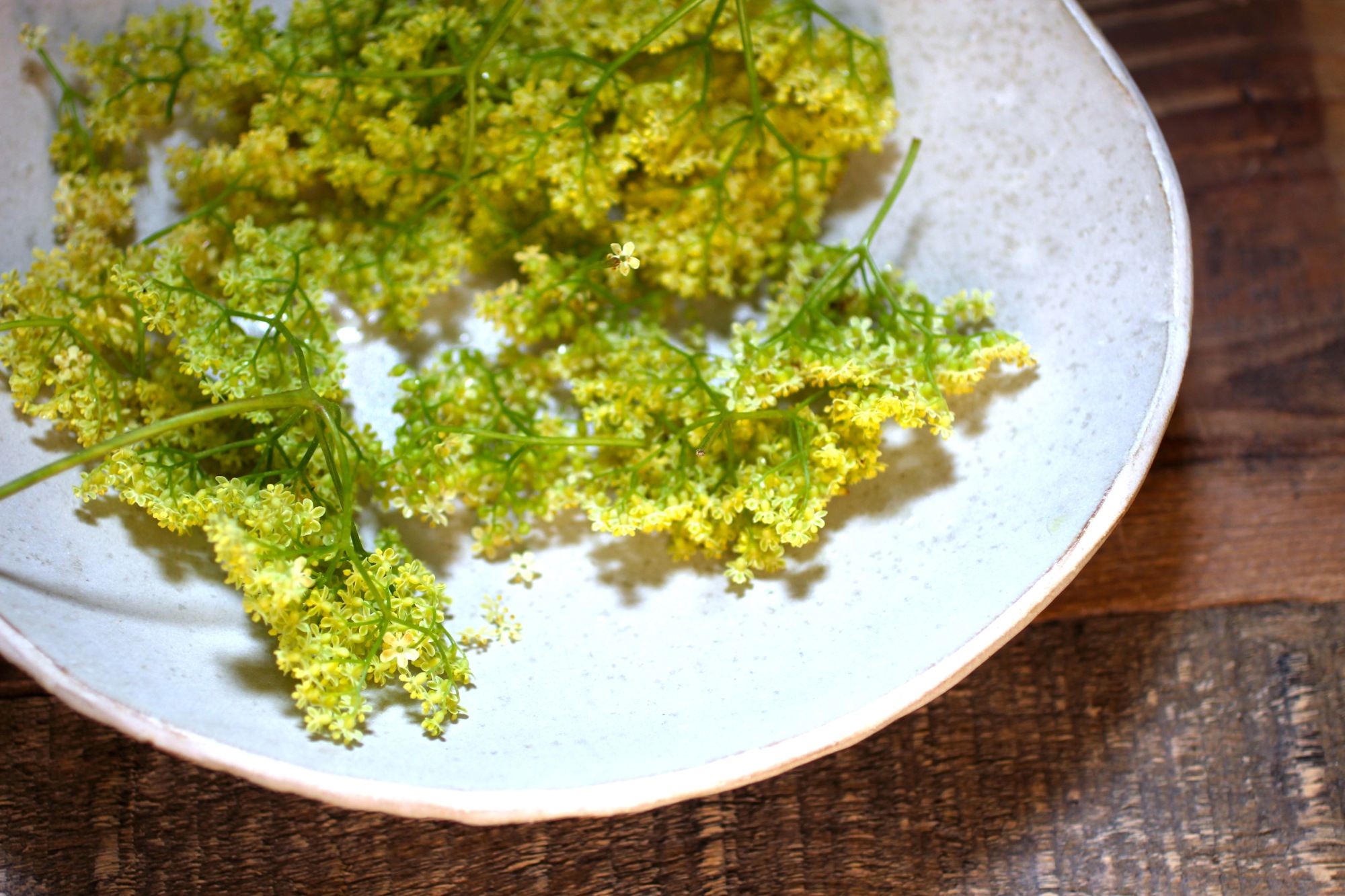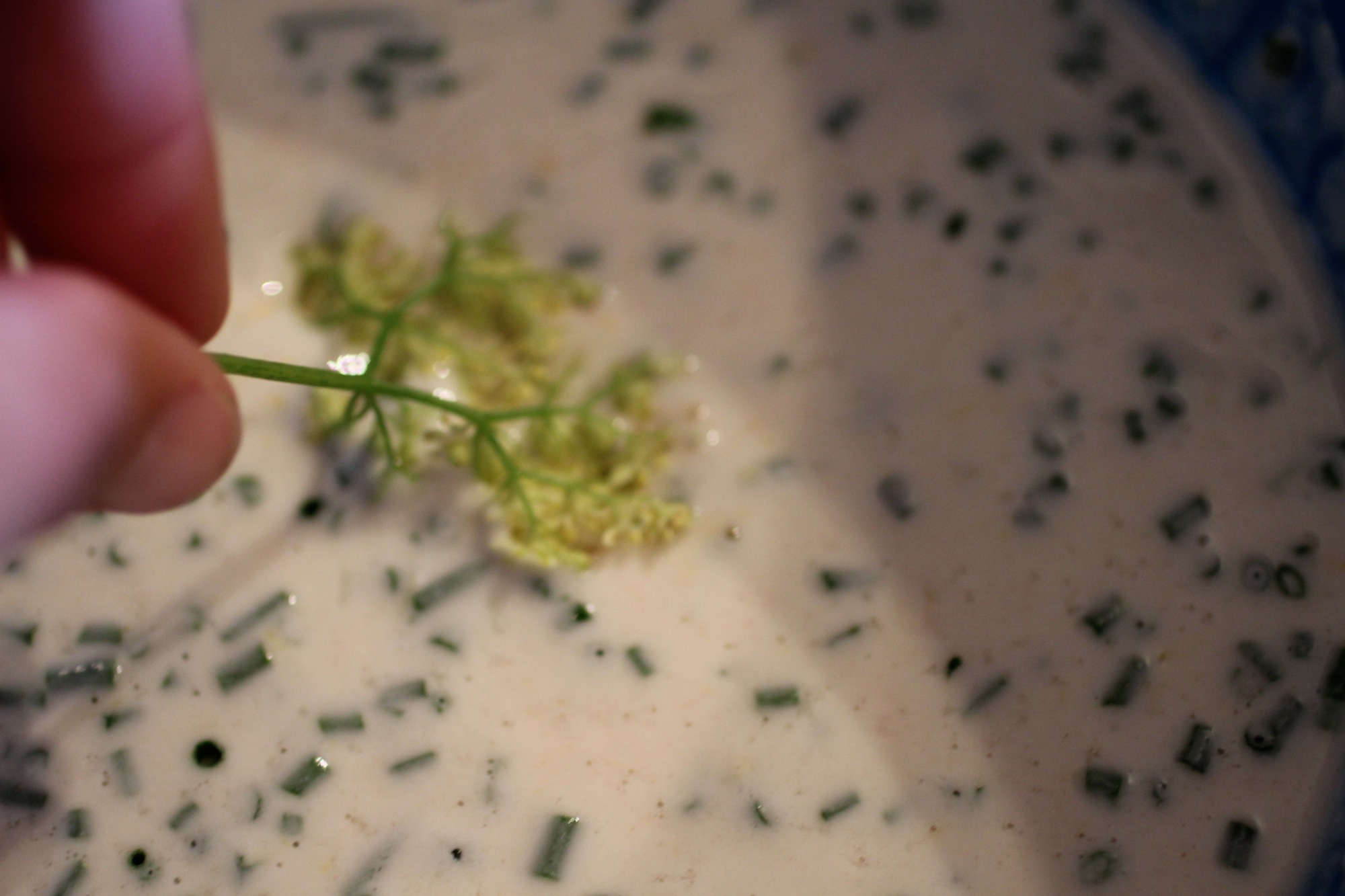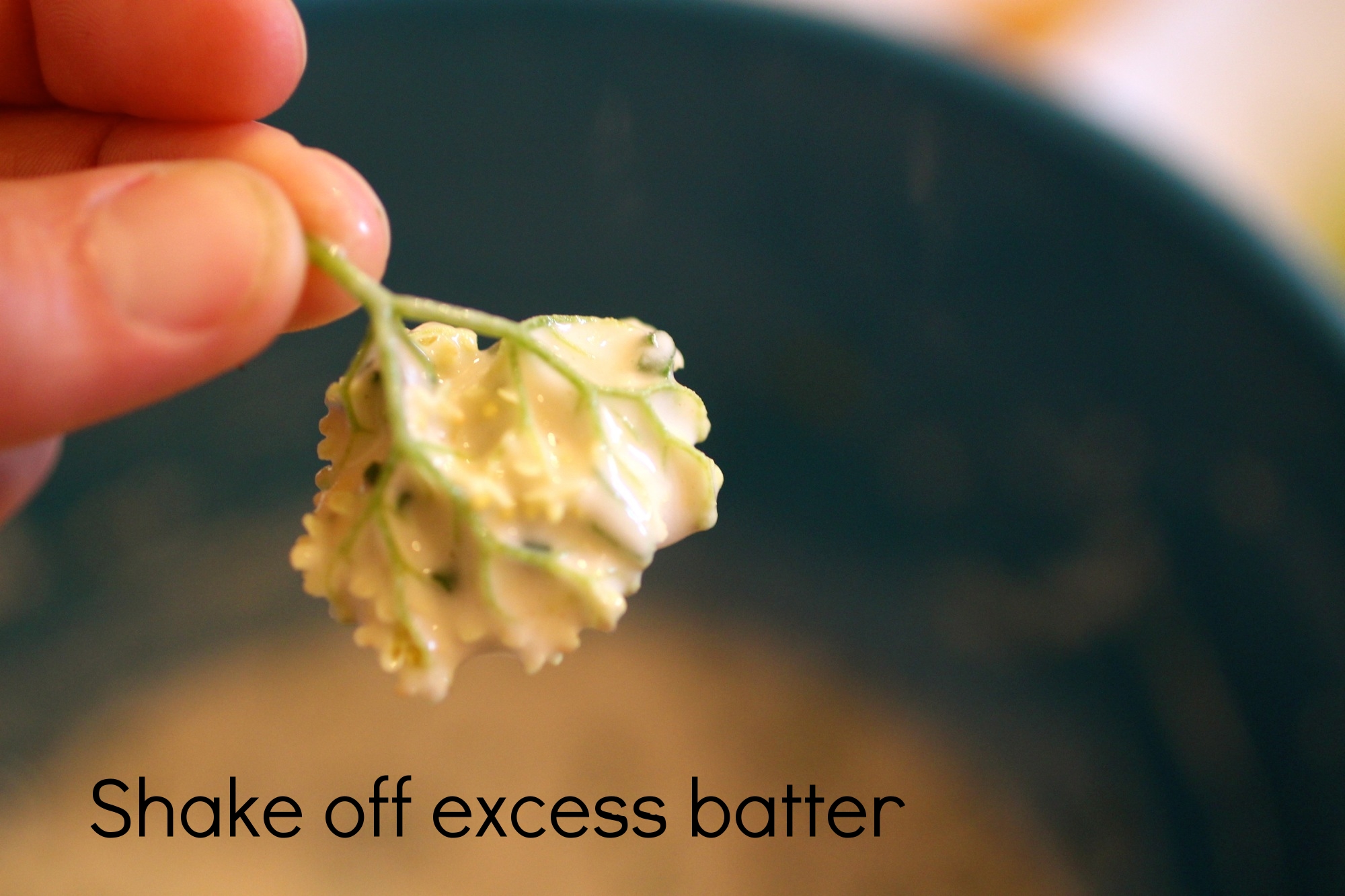Elderflower Chive Fritters
A savory twist on a wild spring treat.

Chives provide brightness without overpowering the elderflower.
As I've mentioned before, I love elderflower and feel a strong connection to the elder tree (more on the “regal elder” and foraging here). Until recently however, the only things I've ever had made with elderflower have been using a sweet cordial. So when I saw a few recipes for elderflower fritters using the whole flower, I was immediately intrigued and wanted to attempt a savory version. The batter contains lemon zest and chives, because I felt that these would add some zest and complexity without overpowering the floral qualities. I served it with ponzu for a dipping sauce, but honestly, we didn't use it much as the fritters stand best on their own! The below recipe makes about 40-45 small fritters, enough for 4-6.
~10 medium-large elderflower heads, broken up into 40-45 small florets
1 cup all-purpose flour
Pinch yeast (champagne or baker's, I used champagne because I had some leftover)
6-8 fluid ounces apple cider or sparkling water
1/2 tablespoon finely grated lemon zest
1/4 teaspoon sea salt, divided
2 tablespoons diced chives, divided
Grapeseed oil, for frying
Ponzu or aioli for dipping (completely optional)






Shake blossoms to remove hitchhiking bugs and dunk into a large bowl of cold water. Remove from water, shake to remove as much water as possible (and probably more bugs!), and pluck smaller clusters (about 1-inch each) from larger clusters, removing as much large stem as possible (there will be some stems still, as that's how the flower clusters stay together). Set aside on a paper towel to dry more.
Whisk flour with yeast, 6 ounces cider, lemon zest, and 1/8 teaspoon salt until combined. Batter should be runny like pancake batter and will start to fluff up from the yeast. If batter is not runny enough, add some more cider then gently whisk in 1-1/2 tablespoon chives.
Pour enough grapeseed oil into a frying pan so that oil is 1/2-inch up the sides of the pan and heat to high.
Once oil is hot, dip florets (one at a time) into batter, shake off any large clumps, and fry in oil until golden brown, about 1-2 minutes on the side opposite the stem, then flip and fry another 30 seconds on the stem side.
Remove fritters and place on paper towel, then repeat with florets in batches until all are fried.
Top fritters with dusting of remaining salt and remaining chives. Serve with ponzu or aioli if desired.

Ponzu not needed, but a cocktail is!
Celeriac Soup with Truffle Oil and Chives
Get gnarly.

As was demonstrated with celeriac chips, celery root can produce foods you would not expect from it's rugged exterior. Instead of a delicately crispy chip, this time celeriac is transformed into a silky, rich, and elegant soup. There are a lot of directions you can take a blended root vegetable soup, such as the addition of bacon or blending with apples, but I think this combination of nutmeg, chive, and truffle oil is ethereal and satisfying. Serves 4.

1 tablespoon butter (can substitute olive oil if a vegan soup is desired)
1 tablespoon olive oil
1 large leek, trimmed of rugged dark green leaves and thinly sliced
1/4 teaspon sea salt, plus more to season as needed
1-2 garlic cloves, peeled and thinly sliced
One large celery root (about 1.5-pounds), peeled and chopped into cubes
2 cups chicken stock (can substitute water or vegetable stock if a vegan soup is desired)
2-3 cups water
1.5 teaspoons freshly-ground white pepper
Fresh nutmeg, to grind over top
Truffle oil, to drizzle
About 2 tablespoons diced fresh chives (a little less than most bunches)
In a large pot, melt butter with olive oil on medium low heat.
Add the leeks and garlic and cook for about five minutes, stirring frequently. Add the salt and continue to cook until the leeks and garlic are soft and translucent, about another 5 minutes. If the pot begins to brown too much on the bottom as they cook, add more butter or olive oil.
Add the celery root, stock, and 2 cups water. Bring to a boil, then reduce to a strong simmer. Cook, with the lid to the pot ajar on top, until the celery root pieces are soft and easily pierced with a paring knife, about 30-45 minutes.
Add white pepper then purée using an immersion blender, or let the soup cool to room temperature and purée in a food processor until smooth. Taste season with additional salt and pepper if desired. If the soup is too thick, it can be thinned with remaining part of cup of water to desired consistency.
Serve with a drizzle of truffle oil, a few gratings of nutmeg, and a scatter of chives.




